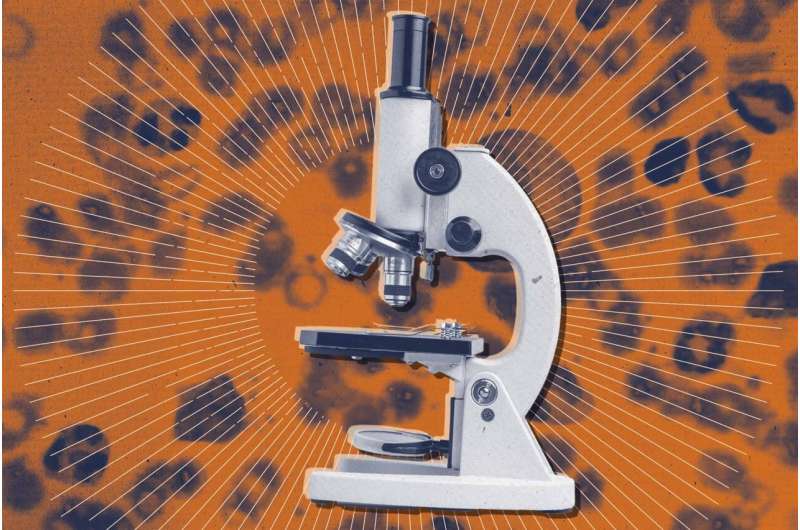This article has been reviewed according to Science X's editorial process and policies. Editors have highlighted the following attributes while ensuring the content's credibility:
fact-checked
trusted source
proofread
Blood cancer discovery identifies high-risk patients, could improve outcomes

University of Virginia Cancer Center researchers have developed a new way to identify patients with acute myeloid leukemia who are at high risk of poor outcomes, which could one day lead to more tailored treatments and improved patient results.
Acute myeloid leukemia, or AML, is one of the most common leukemias, or blood cancers, in adults. It starts in the blood-forming cells in the bone marrow and often spreads to the bloodstream. Until now, doctors have relied on analyzing patients' genes and chromosomes to determine who may be at highest risk, but the limitations of that approach have made researchers eager to develop better ways to "stratify" patients and tailor treatments to their needs.
The UVA researchers found that they could measure specific "bioactive molecules" in cancer cells—molecules that result from microbial activity—and identify patients at risk of poor outcomes.
"By examining lipid profiles, we may be able to predict how patients will respond to standard treatments in clinic," said researcher B. Bishal Paudel of the UVA Cancer Center and the University of Virginia's Department of Biomedical Engineering. "This could lead to new biomarkers in AML that go beyond genomic features that are currently considered."
The researchers have published their findings in the journal Blood Advances.
Types of acute myeloid leukemia
The research team used machine learning to analyze bioactive molecules known as "sphingolipids" in cancer cells. Researchers think these molecules play critical roles in the development of AML and in determining its ability to resist treatment. The researchers found that by measuring these lipids, they could classify AML into two subtypes. Patients in the high-risk subtype had twice the risk of treatment failure as patients in the other subtype.
"Lipids are more difficult to measure than genes, but this study suggests it is worth the effort," said researcher Kevin A. Janes, of the UVA Cancer Center, the UVA Department of Biomedical Engineering and the School of Medicine's Department of Biochemistry and Molecular Genetics. "By using the data to learn the relationship between genes and sphingolipid subtype, we showed how subtypes could be accurately inferred in many more patients than we measured directly."
Patients in the high-risk subtype may be spared from intensive chemotherapy regimens that are unlikely to work against their AML, the researchers say. Doctors could direct these patients toward clinical trials of emerging treatments that may work better for them.
Eventually, the researchers believe they may be able to develop ways to target sphingolipids to improve patient outcomes. The scientists would, in essence, try to alter the sphingolipids in high-risk patients to become more like the low-risk AML subtype. This could make their cancer easier to treat and reduce the chances of treatment failure.
"More research needs to be done to confirm our findings, but we believe this lipid-based subtyping could lead to tailored treatments to AML patients," researcher Dr. Thomas P. Loughran Jr., director of UVA Cancer Center, said. Loughran is one of the project's principal investigators, along with scientists from Eastern Carolina University, Pennsylvania State University and Memorial Sloan Kettering Cancer Center. "We're currently in an exciting phase of studying how lipids affect blood cancers."
More information: B. Bishal Paudel et al, Acute myeloid leukemia stratifies as two clinically relevant sphingolipidomic subtypes, Blood Advances (2024). DOI: 10.1182/bloodadvances.2023010535

















